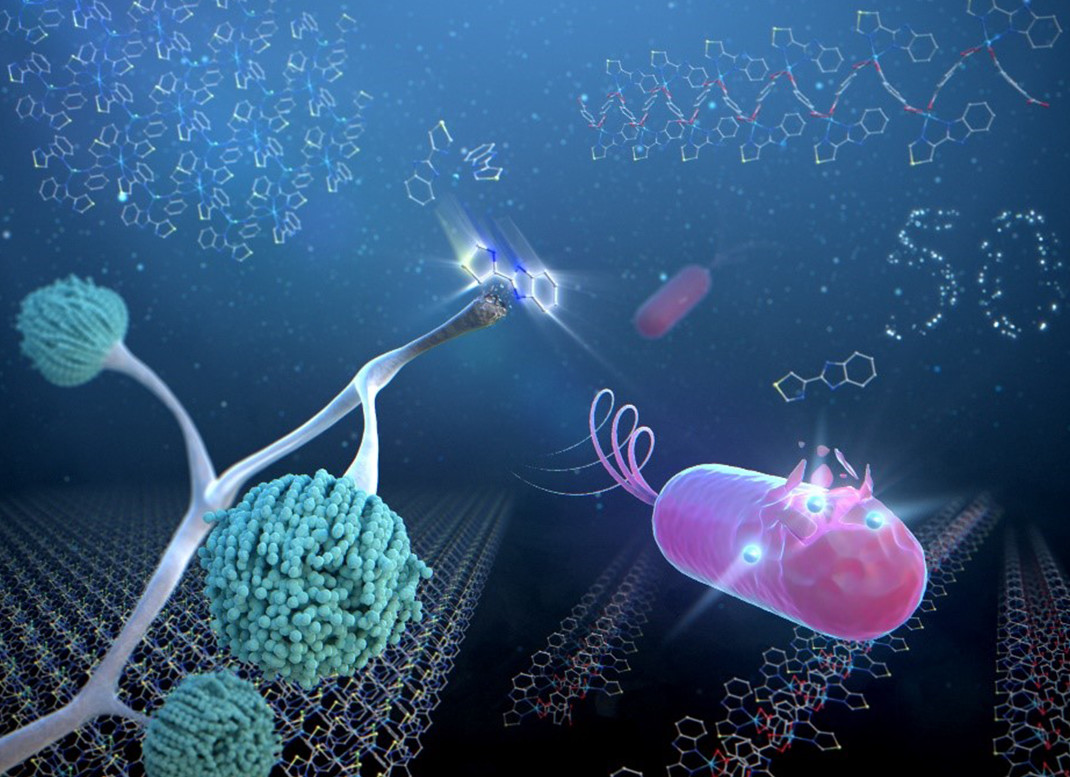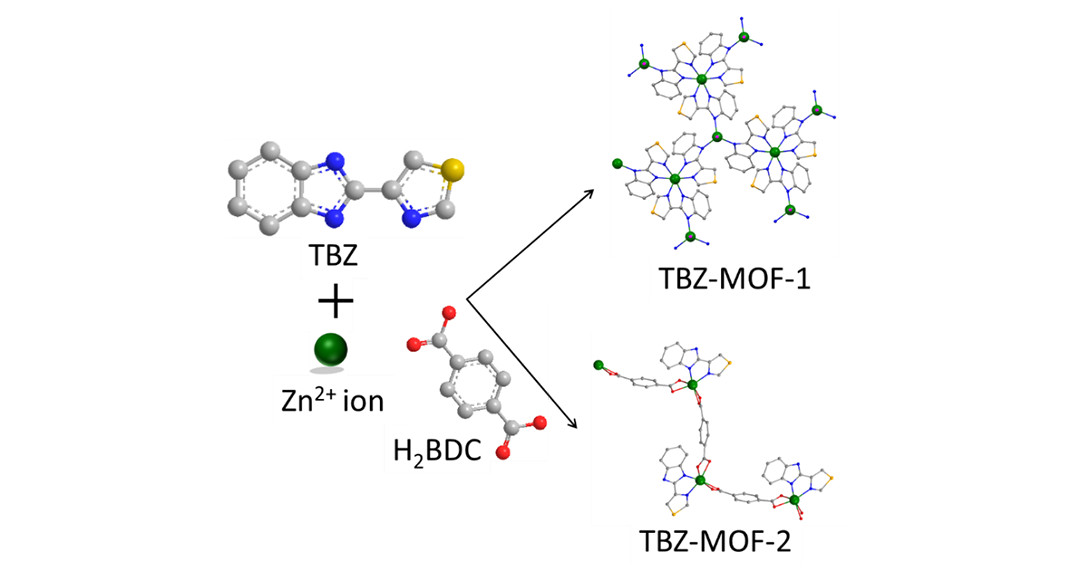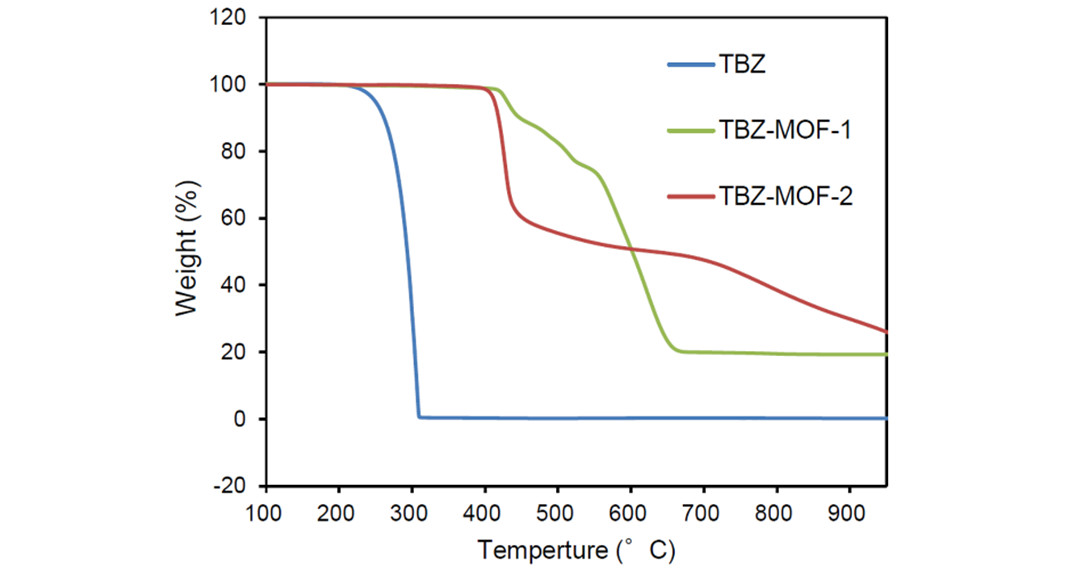Jun 10, 2021
Development of a novel metal-organic framework material that will be safer and more reliable because of its antibacterial/antifungal properties, durability, and heat-resistance
Keyword:RESEARCH
OBJECTIVE.
Professor Mao Minoura of the Department of Chemistry, College of Science at Rikkyo University collaborated with researchers from Nippon Soda Co.* to create environment-friendly molecules that can be used in highly functional bioactive materials that are effective against many microorganisms (Figure 1). The material they developed, which incorporates a widely used agricultural chemical and metal-organic framework (MOF) in its design, is durable, heat-resistant, and gradually releases antimicrobial components to elicit robust antibacterial and antifungal effect. Their findings represent a significant achievement of industry-academia collaboration between Nippon Soda and Rikkyo University, and have been widely praised, including by being published as a bulletin in the Royal Society of Chemistry's journal "Dalton Transactions" and featured on its back cover.

Figure 1: Image of the complex structures of the two MOF materials developed in this study and their antibacterial/antifungal properties.
A comprehensive chemical company led by President Eiji Aga that celebrated its 100th anniversary in 2020. Under a new slogan—"Brilliance Through Chemistry"—the company manufactures and markets high value-added chemical products such as agricultural chemicals, pharmaceutical additives, and electronic materials.
Key points of the study
- The research group succeeded in achieving a high level of balance between broad antimicrobial spectrum, durability, and heat resistance, which had previously been difficult to achieve using conventional MOFs as antimicrobial and antifungal agents.
- Zinc ions have excellent antibacterial effects and thiabendazole (TBZ)*1 is known to have strong antifungal activity. By incorporating these substances into an MOF, they developed a novel bioactive material with an antimicrobial spectrum that is even broader than that of zinc or TBZ alone.
- Using an MOF allowed them to control water solubility and raise the thermal decomposition temperature from the 230 ºC of TBZ alone to at least 400 ºC, which will help expand the range of applications through better physiological durability and greater heat-resistance.

Figure 2. MOF synthesis method and its structures: (top) TBZ-MOF-1, (bottom) TBZ-MOF-2
Thiabendazole (TBZ): A type of fungicide. Its main applications are as an additive for the preservation of foods such as citrus fruits and bananas, wood preservative, and industrial antibacterial/antifungal agent (paint, refrigerator door packing, antibacterial clothing, etc.).
*2)
Metal-organic framework (MOF): A general term for coordination polymers composed of organic ligands and metal ions. Also known as porous coordination polymer.
2. Background of the study
In this study, the research group focused on the fact that MOFs are composed of both metal ions and organic ligands. By combining bioactive metal ions and organic ligands, their goal was to develop a bioactive material with the characteristics of both metal ion and organic types.
3. Results of the study

Figure 3: Thermogravimetry results for MOF synthesized with TBZ (atmospheric)
The water solubility of TBZ and MOF was investigated using the elution concentration of TBZ as the evaluation criterion. The elution concentration of TBZ alone was 20.4 ppm, while for TBZ-MOF-1 it was 0.9 ppm and TBZ-MOF-2 it was 13.7 ppm, indicating better controlled-release than TBZ alone. This shows that better bioactive durability than TBZ can be expected.
Minimum inhibitory concentration (MIC)*3 tests were also conducted to evaluate antibacterial and antifungal activity (Table 1). Individual components of the MOF and their physiological activity were assessed with bacteria (Escherichia coli, Staphylococcus aureus subsp. aureus) and fungi (Aspergillus niger, Trichoderma virens), which showed that while TBZ alone was only antifungal and zinc alone was only antibacterial, both TBZ-MOF-1 and TBZ-MOF-2 exhibited strong antibacterial and antifungal properties.
a: Normalized for the zinc ion alone concentration, b: Normalized for the TBZ alone concentration
The minimum inhibitory concentration (MIC) is the minimum level at which an antimicrobial material can inhibit the growth of a microorganism. It is calculated in drug susceptibility tests and is an important indicator for selecting antimicrobial materials.
4. Social contributions and ripple effects
5. Future developments
6. Paper information
- Title: Broadened bioactivity and enhanced durability of two structurally distinct metal–organic frameworks containing Zn2+ ions and thiabendazole
- Authors: Daiya Kobayashi, Akira Hamakawa, Yuki Yamaguchi, Toshiaki Takahashi, Mitsuhiro Yanagita, Shigebumi Arai and Mao Minoura
- Journal: Dalton Transactions (The Royal Society of Chemistry) 2021, 50, 7176.
- DOI:10.1039/d1dt00733e